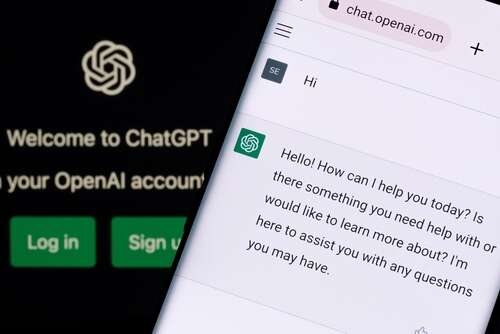
The hype surrounding OpenAI’s next-generation large language artificial intelligence model GPT-4 is over the top, the company’s CEO has said. Sam Altman claims people are “begging to be disappointed” as the new model won’t feature anything like the 100 trillion-plus parameter scale that many predict. He also warned it would only be released when the company is confident it can be done so safely and responsibly.

In a wide-ranging interview, Altman said his company would be releasing technology “much more slowly than people would like”, suggesting his team would be spending longer evaluating future models than many anticipate.
GPT-3.5 is the most recent large language model produced by OpenAI, and is used to run the wildly popular ChatGPT chatbot. It is a tweaked update to the 175 billion-parameter GPT-3 that was released in 2020 to much fanfare. Since its release the speculation surrounding the size and scale of GPT-4 has reached a fever pitch, with some rumours pointing to more than 100 trillion parameters.
Altman says there is no truth in this rumour. “The GPT-4 rumour mill is a ridiculous thing, I don’t know where it all comes from. It has been going for six months at this volume,” he told an event hosted by StrictlyVC.
The scale being suggested would point towards GPT-4 being the first AGI (Artificial General Intelligence), a system with human-like cognitive ability that can learn and adapt to different tasks, which is the eventual goal of Altman and the OpenAI team. However, he says this is “still some way off”.
His prediction is that when AGI does come it will be gradual, with small improvements over time rather than a big event. “The closer we get to AGI the harder it is to predict when it will happen as it will be much earlier and much more gradual than people think,” he said.
GPT-4: stop with the hype already, OpenAI’s Altman says
Altman wouldn’t be drawn on when GPT-4 would be released, what it would look like or the scale of the model, only saying that it won’t match the hype.
He said he was taken by surprise at the scale of interest in ChatGPT, the company’s recently released “research preview” chatbot that has stunned the world with its ability to provide in-depth coherent answers to simple text prompts. Many have already made it an essential part of their workflow, and a professional tier is said to be on the way for heavy users. Its ability has prompted schools to ban its use due to cheating, and has been described as producing “very real looking wrong information”.
OpenAI released ChatGPT as nobody else seemed to have picked up on the potential for “dialogue” with AI as a means of interaction, Altman revealed. “We had the model for about ten months or so and I thought someone would build it. I believed the way people wanted to interact with these models was through a dialogue. The pieces were there for a while,” he said.
“I can see why DALL-E surprised people but was genuinely confused why ChatGPT did. We put GPT-3 out almost three years ago, put it into an API and the incremental update from that to ChatGPT should have been predictable and want to do more introspection on why I was miscalibrated on that.”
He said he expected an order of magnitude less hype and an order of magnitude fewer users than was actually the case when they prepared to release ChatGPT to the world. “Less hype is probably better as a general rule. One of the strange things about these technologies is they are impressive but not robust. Use them in a demo you think ‘good to go’ but use them longer term and you see the weaknesses. But it is going to get better.”
OpenAI have had to rapidly scale its servers and backend operations to cope with the unexpected demand for ChatGPT, which went from zero to over a million users in a few days after release. It has been suggested as a “Google killer” and the death of education as we know it.
Is AI a new paradigm for search?
On competition with Google in the search market (ChatGPT is being incorporated into Microsoft’s Bing search engine) he said “there is a change for search that will probably come at some point, but not as dramatically as people think. My guess is people will be using Google the way they do now for some time.”
Microsoft has announced it would be making the API for ChatGPT available to Azure customers, which Altman says “isn’t an exclusive deal”. The API would be available from OpenAI themselves and other providers in the future.
The interview came out on the day an investigation revealed that OpenAI had used Kenyan workers to make ChatGPT less toxic, but paid them less than $2 per hour for their efforts.
They would label tens of thousands of snippets of text taken from the darkest parts of the internet, describing self-harm, torture, incest and worse. This was then fed back to the AI so that ChatGPT could learn from it and detect when these forms of toxicity were being used in a prompt. This would then allow the team to ensure it wouldn’t generate that type of content in the future.
The Time investigation alleges that San Francisco-based outsourcing company Sama paid employees in Kenya a take-home wage of between $1.32 and $2 per hour depending on seniority. In Kenya the minimum wage varies depending on industry and the part of the country they live in. For domestic workers in Nairobi, this would be about $131 a month, with a national average of about $121 US.
OpenAI has yet to comment on the Time story, hasn’t revealed the names of the outsource companies it uses and Time says it may also work with other companies on labelling.






